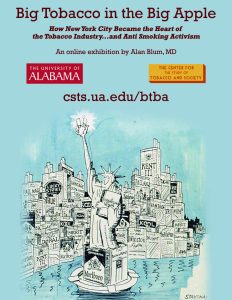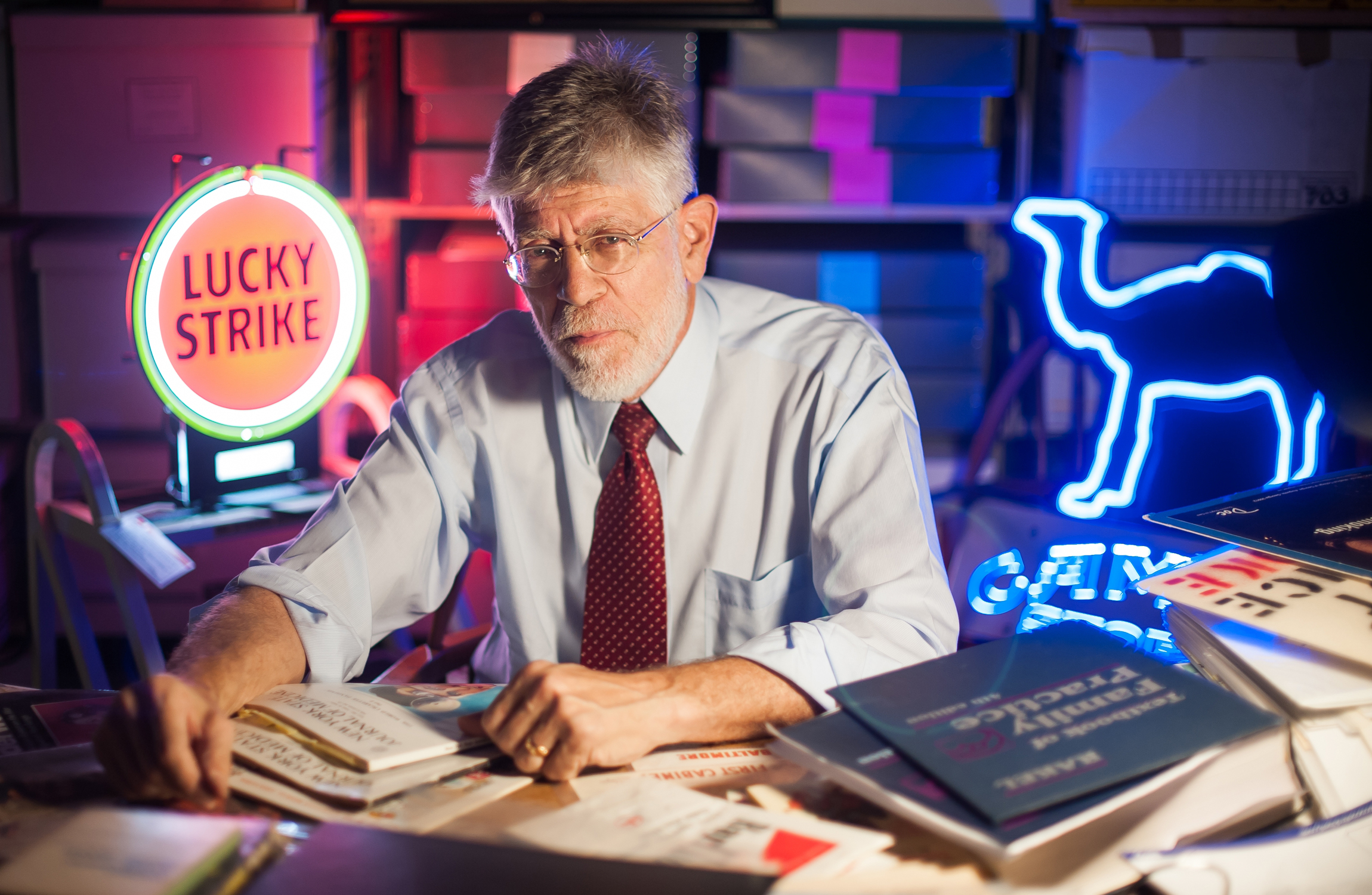New York City has been home to numerous activist movements involving issues of civil rights and religious freedom, among many others. But according to one University of Alabama professor and New York City native, the Big Apple was late to show much activism against one of the leading killers in the United States because of the heavy influence of its producers.

Dr. Alan Blum, professor and Gerald Leon Wallace, MD, endowed chair in family medicine in the UA College of Community Health Sciences, is considered to be one of the foremost authorities on the history of tobacco use. His latest exhibition, titled “Big Tobacco in the Big Apple: How New York City Became the Heart of the Tobacco Industry … and Anti-Smoking Activism,” showcases the power of the tobacco industry and its allies in New York City over the past century and how anti-smoking activists eventually sparked change in the early 2000s. Blum’s exhibition, which features more than 600 photographs, advertisements, television and radio commercials, and audio commentaries by Blum and others, is currently online at https://csts.ua.edu/btba/.
“The exhibition evolved considerably as my team and I started piecing everything together,” said Blum. “Although I grew up in New York City and noticed all of the cigarette advertisements around me, it wasn’t until my research for the exhibition that I realized that the city was the center of the tobacco universe for a long time.”
The exhibition illustrates how New York City, which was home to hundreds of small cigar and cigarette manufacturers in the 19th century, became the global headquarters of the tobacco industry throughout the latter half of the 20th century by virtue of being home to three of the six major U.S. tobacco companies: Philip Morris, P. Lorillard, and American Tobacco. With such a heavy presence, these entities were able to sway businesses and organizations to promote their products, which annually kill close to 500,000 Americans, while quieting anti-smoking activism.
“The exhibition explores how cigarette companies like Philip Morris grew from being fairly small in size to some of the most powerful companies in the world,” said Blum. “As the profits of cigarette companies grew, so did their allies.”

The Influence of the Tobacco Industry
Blum’s exhibition depicts the influence of the tobacco industry with countless cigarette advertisements he has compiled or personally photographed over the past 40 years. Billboards, newspaper ads and city transportation promoted cigarette companies in some of the most iconic areas of the city, including Times Square and Yankee Stadium. One of the more powerful pieces of the exhibition is a Camel cigarette ad from the 1920s that was translated into 29 different languages for the numerous ethnic newspapers.
The world of sports was also a prime target for promoting tobacco products. The exhibition contains audio of famed baseball announcer Vin Scully reading commercials for Lucky Strike cigarettes during the last two innings of a no-hitter in 1956. It also includes cigarette endorsements from baseball idols Babe Ruth, Joe DiMaggio and Jackie Robinson.
Although there was some support for anti-smoking legislation in the 1980s, cigarette companies often received subtle, or blatant, support from their allies.
“The tobacco industry was even aided by cultural organizations, including opera companies, art museums and dance troupes, to which cigarette makers provided funding,” said Blum. “The leaders of some of these groups showed their loyalty to Philip Morris by testifying at the New York City Council against the passage of clean indoor air legislation.”
Blum credits the small but vocal and persistent group of anti-smoking activists of the 1980s in New York City with laying the foundation for the dramatic changes enacted by former mayor Michael Bloomberg from 2002 to 2013. During his tenure, New York City implemented several far-reaching smoking bans, anti-smoking education in schools and mass media, and a steep rise in cigarette taxes.
“My goal was for the exhibition to be an encyclopedic look at the tobacco industry’s influence on New York City and recognize those who finally stood up to the tobacco industry and its allies beginning in the 1980s.” Dr. Alan Blum
The current exhibition is Blum’s 11th on tobacco-related subjects since 1988. His previous exhibition commemorated the 50th anniversary of the landmark U.S. Surgeon General’s Report on Smoking and Health that was released by Alabamian Dr. Luther Terry. The exhibition debuted at UA’s Gorgas Library before traveling to the Lyndon Baines Johnson Presidential Library in Austin, Texas, and Texas Medical Center Library in Houston.
UA’s Center for the Study of Tobacco and Society, founded by Blum in 1998, holds the world’s largest collection of original tobacco industry documents and books; rare advertising ephemera; photographs; artifacts; and newspaper and television coverage of the tobacco industry and the anti-smoking movement.
